Not so long ago, India’s archaeological community commemorated 100 years of Harappan archaeology and research, which began by acknowledging and announcing the findings from the excavation at Harappa in 1924. This announcement was celebrated for its power to overturn long-held assumptions about India and marked the beginning of a new line of research in archaeology. It proved that the past is much older, extremely rich, and more complex than many suggested.
And yet, a century later, new discoveries are rarely met with the same openness. The Iron Age findings in South India, the cultural horizon at Keeladi, and the contested interpretations of Sinauli findings have all met with scepticism, which transcended the ivory towers of academia and into popular discourse. It is a curious irony, especially when we celebrate the dramatic rewriting of history a century ago, and now treat fresh discoveries and evidence with disbelief. As if the past we’ve agreed upon is more comfortable than the one still emerging from the earth.
For a long time, the absence of evidence has been treated as the absence of history. And when new evidence finally appears, it is often resisted more than it is examined. Today, this resistance is not only from within academia but has translated into the political arena. Here, evidence is hand-picked for theatrics, and the focus shifts away from the core of the story. Sinauli is one such site at the centre of this discomfort, not merely as an archaeological site, but as a reminder of how fragile our narratives become when confronted with materials that challenge them.
The findings from the Sinauli excavation have been subjected to speculation of all kinds. Interestingly, before the excavators and the team could even publish the findings, people and the media gave their verdicts. The facts were massively overshadowed by speculations and assumptions. It is, therefore, essential to place archaeological facts above all else.

The discovery
Roughly 65 km from Delhi, in the Sadiqpur Sanauli village, lie the archaeological remains buried beneath sugarcane fields. The buried treasures came to life in the summer of 2005 when the site was subjected to rigorous and systematic excavation by DV Sharma of the Archaeological Survey of India (ASI).
The excavation began a year after a news report in Dainik Jagran described pottery and skeletal remains being unearthed in Sadiqpur Sinauli. Spanning 13 months in 2005–06, the excavation yielded 116 burials. A majority of these were extended burials, with complete skeletal remains laid down in an extended position. The second most common type was secondary burials, where the remains were initially buried elsewhere and were reburied at the site. There were also symbolic burials, which included artefacts and pottery, but lacked human remains. Double and triple burials were also reported from the site.
As per the excavators, the site showcased Late Harappan elements in association with the Copper Hoard/OCP (Ochre Coloured Pottery) cultural milieu, the latter represented by antennae swords found in many burials during the excavation. The necropolis was likely in use for several centuries, and the excavators relatively dated the site and excavated remains to 2200 BCE to 1800 BCE. They stated that although it is generally labelled ‘Late Harappan’, the site has certain overlapping traits with the Mature Harappan phase, hence the time bracket.
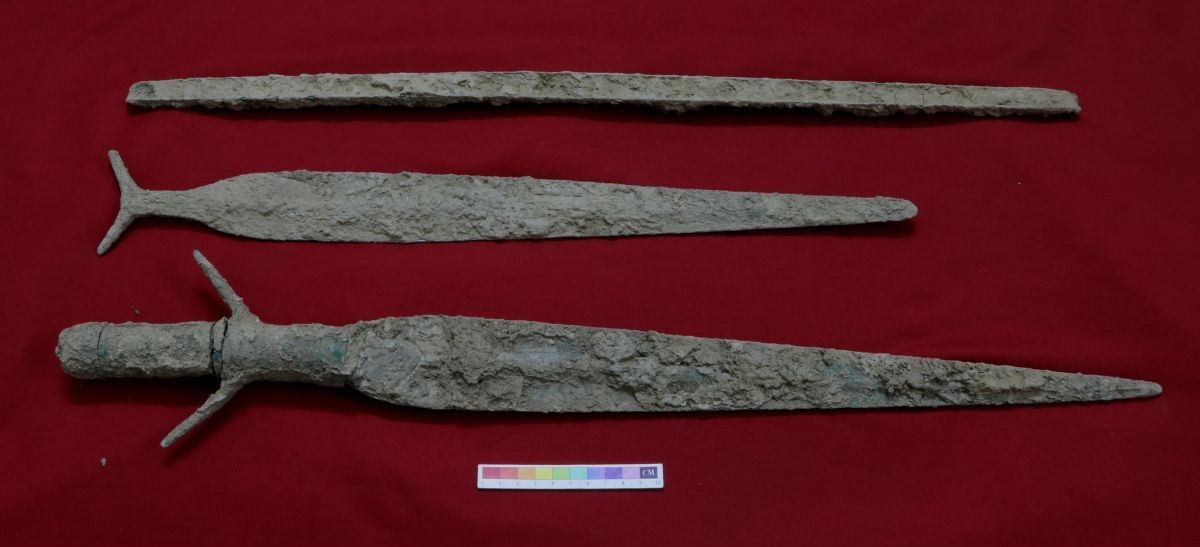
It may sound confusing, but clearly, from the beginning, this site yielded evidence that didn’t fit in the accepted linearity of the past. The presence of antennae swords and other Copper Hoard/OCP objects, as rightly acknowledged by the excavators, presents a unique situation. It forces us to reconsider long-standing assumptions about cultural boundaries, technological diffusion, and what “Late Harappan” actually meant on the ground. These circumstances and the lack of scientific dates prompted the second round of excavations in 2018, 12 years after Sinauli was first investigated.
Also read: Imbalance persists in ASI’s modus operandi. Bengal, Bihar demand more attention
All thanks to copper
In March 2017-18, Sanjay and Arvin Manjul were excavating at Barnawa, located in the same district, roughly 25 km east of Sinauli. They decided to take a small dig at the Sinauli site to obtain samples for dating and other scientific analysis. It was clear to them that Sinauli offered an array of possibilities and should be looked at in lieu of recent discoveries made at the nearby site of Chandayan in 2014.
By April, it was clear to them that the excavation had exceeded their expectations. In a 10 x 10 m area, 120 m north of the region excavated by Sharma in 2005-06, the new excavation yielded eight burials, including three coffins, three chariots, copper antiquities, objects, and, most importantly, weapons such as a dagger, swords, and a hilted antennae sword.
In the following year, Manjuls’ excavation in the area yielded two more burials, both with legged coffins and a brick wall structure. During this season, the excavation was also extended in the east, much closer to the area excavated by Sharma, and yielded a series of furnaces.
The highlight of this excavation was the legged coffins—covered with steatite and copper inlays. One comprised a lid with decorated anthropomorphic figures. The site also had three chariots decorated with copper inlays, a brick chamber in the burial complex, and furnaces in the east (indicative of workshops), and an array of weaponry from burials.
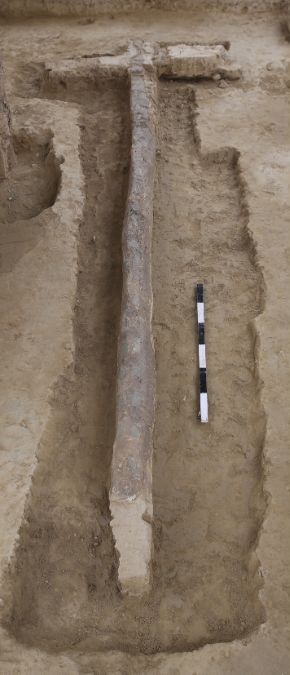
The biggest burial pit (no 6) was the one with two chariots placed together, next to an 8-foot coffin with multiple legs. The coffin was made of wood, which had decomposed. The only way that the artefact could be traced was because of the copper. The coffin box was sheathed with copper, and the legs were also covered with copper plates. Similarly, the chariot wheels had triangular copper inlays in a radiating pattern. The rest of the chariot, including the D-shaped frame, chassis, and pipes, were all made of copper. The yoke and the pole were missed during the excavation, only because it lacked copper ornamentation.
The missing yoke and the pole were successfully traced in the adjoining burial (Burial Pit 3), as it was covered with copper triangular inlays. Together, this helped the excavators piece together the parts of a vehicle which was two-wheeled and had a unique D-shaped frame.
Beyond this, the two burial pits presented slightly different stories. The first one reflected the life of an affluent person. With two chariots and a large coffin covered in copper, they must have had a high cost. Moreover, a copper chalice with a tortoise base was found at the bottom of the coffin, along with silver and electrum sceptres at the top. Additionally, the elaborate coffin lid with a series of anthropomorphic figures hints at the social status of the individual buried in the pit. Since the coffin with the lid was a unique and solitary find, it was preserved by the excavators.
Another burial pit (Burial Pit 3) consisted of a chariot with a decorated pole, a legged coffin with fragmentary skeletal remains, a copper dagger and an antenna sword, and a copper shield resting on the pole. The evidence collected from the burial indicated that this individual probably used the weaponry and the chariot. This shows the complexity of the society and individualistic personalities of the people buried at the site.
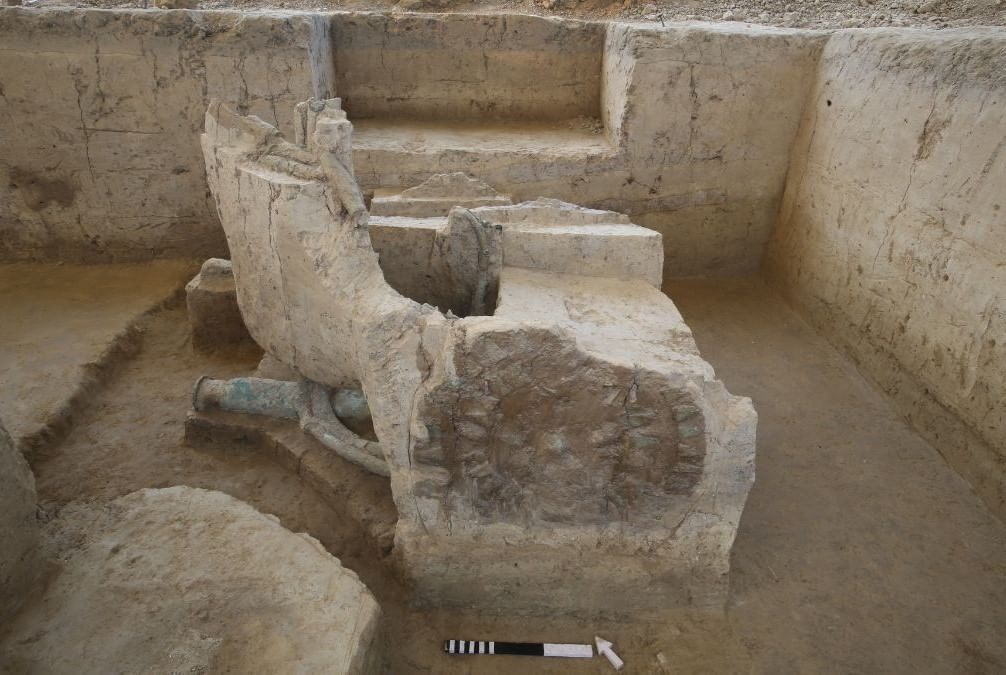
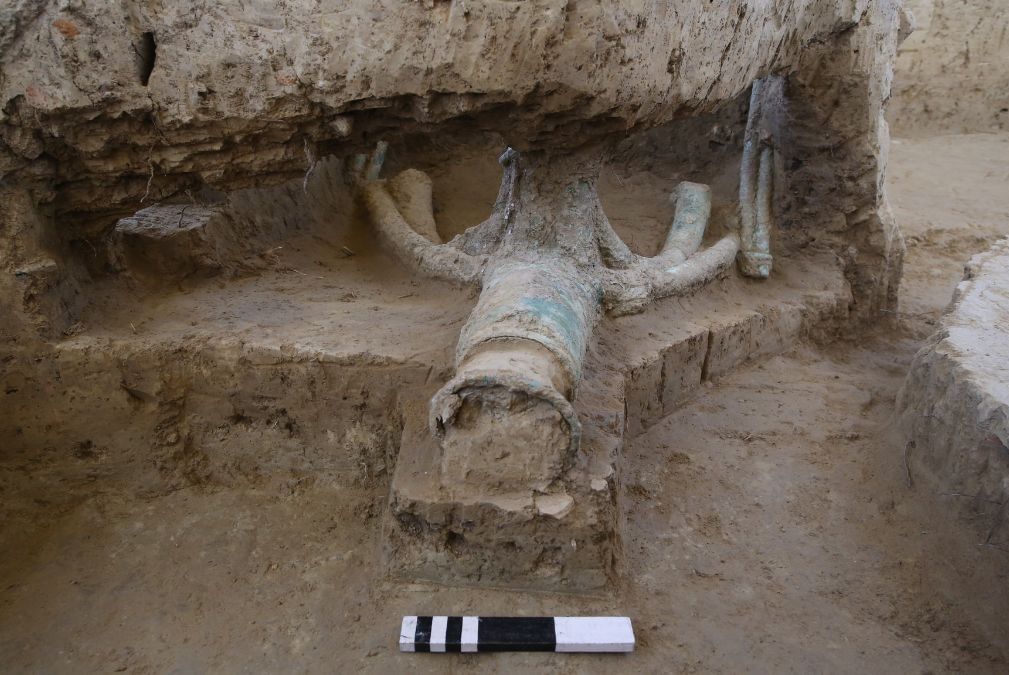
Another crucial piece of evidence was the hilted antennae sword found in a symbolic burial. This was the first time an antennae sword—which is known to have been part of the Copper Hoard tradition—was found with a hilt.
Decades ago, Paul Yule examined many copper hoard implements and found no evidence that could decode their use, so he labelled all the antennae swords as ritualistic. One of the reasons behind this was the absence of a hilt. But at Sinauli, the only sword with a hilt was found, which put these implements out of the ritualistic label and made them functional. This begs the question: Did all antenna swords ever found have wooden hilts but lacked a copper–wired cover, which was found at Sinauli?
The Manjuls were able to get the scientific dates, which interestingly coincided with the bracket given by Sharma. The burials are now datable to 2200 to 1800 BCE. However, the only change Manjuls noticed was the cultural affiliation. Unlike the first excavators, the Manjuls were of the opinion that Sinauli was an OCP/Copper Hoard site—a cultural milieu concentrated in the Yamuna-Ganga Doab and a contemporary of the Harappans.
The Manjuls acknowledged the Harappan influence in the cultural material, but strongly opposed its Late Harappan tag. According to them, the time bracket (2200-1800 BCE) falls within the Mature Harappan bracket (2600-1900 BCE) and not the Late Harappan bracket (1900-1500 BCE). Sharma himself accepted the presence of Mature Harappan pottery, such as the dish on a stand during the initial excavation, yet he went ahead with the Late Harappan tag.
Was this influence more with the location of the site rather than the material culture? Sinauli falls within the easternmost edge of the Harappan Civilisation—an area that has yielded many Late Harappan sites, including Alamgirpur. Is it possible that the initial assumption was made from a rather comfortable place? These questions are addressed not to the excavators, but to the entire archaeological community.
During his excavation in 2005-06, Sharma was aware of this admixture of cultural influence. It was highlighted once again in the recent excavations by Manjuls.
Also read: How Anuradhapura’s ancient monastic complex altered the course of Buddhism in Sri Lanka
Root of disbelief
The storm around Sinauli erupted in two waves—one within the academia and another from the public. Many academics disregarded the claims of chariots being found, solely based on a handful of pictures circulating on the internet. For them, the vehicle resembled a cart. They had absolutely no argument supporting their disbelief beyond the fact that it was the first–ever such evidence found in the subcontinent. Is its prior absence enough to discredit the physical evidence?
In the public domain, the chariots were misinterpreted as a device planted by the government to fortify Hindutva. Archaeological nuance was flattened into polarised debate, and Sinauli became less a site of inquiry and more a pawn in a cultural tug of war.
The truth is that the limited excavations (in both instalments) only highlight the potential of the site and its archaeological heritage. It is evident that further excavations are needed, especially when we know that Sinauli did not flourish in isolation. The 2014 discovery of a copper crown and an antenna sword at Chandayan and recent excavations at Tilwara (located near Sinauli) only suggest a beginning and not the end.
One can’t help but draw parallels with the discovery of Harappa a century ago. Did Daya Ram Sahni and others face scepticism too? If new discoveries once opened doors to the unknown, what rationale do we have to resist new evidence, simply because it doesn’t resemble the narrative we have grown too comfortable believing?
Why can’t there be a chariot in a burial pit and legged coffins? Why can’t there be an admixture of different cultures in 2000 BCE? Why can’t there be fluidity in human interactions of the past? We have to remember that the boundaries of these archaeological cultures are set by us, and they can change with new evidence.
Disha Ahluwalia is an archaeologist and research fellow at the Indian Council Of Historical Research. Views are personal. She tweets @ahluwaliadisha.
(Edited by Prasanna Bachchhav)



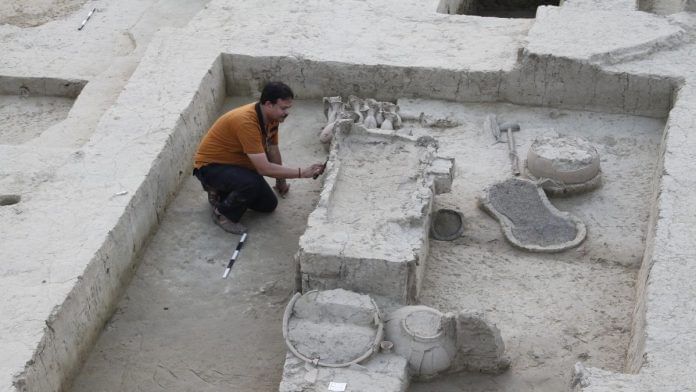



first of no one came from outside and became elites stop this BS….we have too much data an evidence now to successfully refute all this…just stop this leftist propaganda..it was always BHARAT MATA…and OIT is the real theory Out of India we went outside and populate other parts and everyone should LOOK UP to india and feel greatness !!
It would have been nicer if writer rather than going into politics, would have elaborated about the consensus among the experts about the new evidence found in this area. She is an archaeologist and can educate general public and explain science in simple terms. It is a shame that author is more interested in politics and rumblings rather than educating the people.